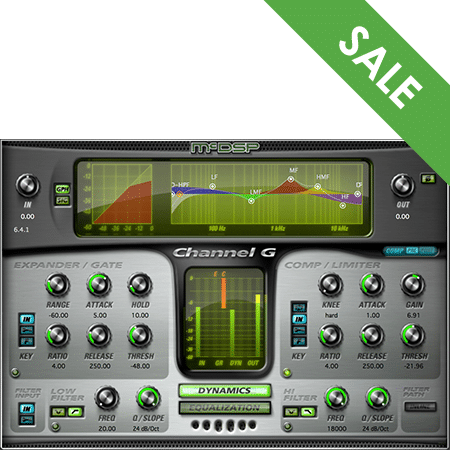Where Does Mcdsp Put The Vst Plugin
AAX DSP, AU and VST
- So first confirm you have installed the 64 bit or 32 bit version of the plugin into the C: Program Files Vstplugins folder or in the C: Program Files (x86) VstPlugins folder. Now, IF the VST manufacturer does not have a 64 bit version you will need to run the Studio One 32 bit version to use that plugin.
- Cubase and Nuendo Navigate to Studio on the top bar, then click VST Plug-in Manager. Click the Cog icon, then click the + sign. Select Add Location, navigate to where you installed your plug-in (s) to then click the Refresh icon.
- This article provides detailed information on VST plug-in installation paths on Mac OS X and macOS. Click here to switch to VST plug-in locations on Windows. Click here to switch to Locations of internal Cubase and Nuendo plug-ins. First of all, it is important to understand that not all VST plug-ins are being installed into the same folder.
- Windows users: From within Studio One, navigate to the Options Locations, and select the VST Plugins tab. By default, Studio One will have C Program Files Vstplugins as the default location. You can also use the Add button to add custom locations.
All VST plug-in installers for Mac are using these folders: The 'Plug-ins' directories contain both a VST and a VST3 folder as well as folders for other plug-in formats. In most cases, plug-ins installed correctly into these folders should be available in compatible host applications.

SAVE 50% on your first month
or year with coupon code:
ALLACCESS50DEAL
at checkout.
Mcdsp Torrent
Who Use McDSP Plug-ins
Travis Scott
Madonna
Kendrick Lamar
Kanye West
Game of Thrones
Girls
Moonlight
Apollo 18
Mary J. Blige
The Carters
James Brown
Lady Gaga
Beyoncé
Mariah Carey
Michael Jackson
Kelly Clarkson
Iron Man
Sting
Donna Summer
Seal
The Wallflowers
Everclear
Linkin Park
Twenty One Pilots
Patriots Day
Deep Water Horizon
The Revenant
J Balvin
Enrique Iglesias
Pitbull
Five Finger Death Punch
Disturbed
Ozzy Osbourne
In This Moment
Usher
Outkast
Prince
Tyrese Gibson
James Bay
John Mayer
Coldplay
Shakira
Knife Party
Iggy Azalea
Tinie Tempah
A Star Is Born
Black Hawk Down
Star Wars
Dream Girls
Travis Scott
Madonna
Kendrick Lamar
Kanye West
Game of Thrones
Girls
Moonlight
Apollo 18
Mary J Blige
The Carters
James Brown
Lady Gaga
Beyoncé
Mariah Carey
Michael Jackson
Kelly Clarkson
Iron Man
Sting
Donna Summer
Seal
The Wallflowers
Everclear
Linkin Park
Twenty One Pilots
Patriots Day
Deepwater Horizon
The Revenant
J Balvin
Enrique Iglesias
Pitbull
Slash
Disturbed
Ozzy Osbourne
In This Moment
Usher
Outkast
Prince
Tyrese Gibson
James Bay
John Mayer
Coldplay
Shakira
Knife Party
Iggy Azalea
Tinie Tempah
Black Hawk Down
Star Wars
Dream Girls
As shown some time ago for the Mac, today’s tip shows you how to organize your plug-ins on windows, in order to find and load them quickly into Blue Cat’s PatchWork or MB-7 Mixer.
As you will see, It’s no rocket science, and this will greatly improve your experience and reduce the time to load your plug-ins.
Spending Too Much Time Looking For Plug-Ins?
Some people have been asking for the capability to load the plug-ins directly from the menu instead of having to open an Explorer Window. While this may be added in the future to our software, be aware that it may never beat what you can already do today with the Windows Explorer or Finder, as you will see below…
How To

On Windows, whatever you do, your VST plug-ins folder will probably quickly look like a huge mess, unfortunately…
There is however a very simple way to overcome this issue and organize your plug-ins properly: it will just take you a few minutes!
To quickly access your plug-ins, without modifying the original install locations (for optimal compatibility), just do the following:
1. Create a new folder somewhere convenient on your system. For example in the ” My Documents” directory.
2. Label the new folder as “Plug-ins”.
3. Drag it into your Sidebar Favorites section to make it available as a shortcut there.
4. Go to your VST plug-ins folder.
5. Right click on each plugin you want and choose “Create shortcut” (multi-selection works too).
6. Move these shortcuts to your new folder, and create sub-folders to organize them.
Here you go! You can now access plug-ins quickly using the shortcuts, inside the appropriate folders:
VST Plug-Ins organized into subfolders, directly accessible from the Favorites Sidebar
Additional Tip: You can also choose to add several folders to the favorite bar instead of a single one, to access directly the mostly used plug-ins that you use most of the time.
/electric-bass-plugin-vst.html. One More Tip: It is possible to add a shortcut to the same plug-in in different folders, as it may be valid for several categories.
Not Fancy Enough? Add Some Icons!
Once you have properly organized the plug-ins thanks to shortcuts and linked to them from the favorites bar, you may want to add some colors to it and change the icons. You can set a different icon for each folder, and even for each plug-in:
Plug-Ins Folders with Custom Icons
With custom icons, it is even easier to find the plug-ins: a glance will suffice to pickup the right one! /vst-plugin-mde-x.html.
Free Search Included!
And one more thing… Did you know that you can then use the standard windows search feature to find the plug-ins? Just type in a name and you’ll get it instantly!
Best Mcdsp Plugins
VST Plug-In Search Included !
Conclusion
Mcdsp Vst
Simply using the Windows Explorer properly and taking the time to organize things will greatly improve the plug-in loading experience. There are even features that are not available in most host applications (how many do provide custom icons and search?).
Where Does Mcdsp Put The Vst Plugins
Do you still need an included plug-in menu? Please discuss below!